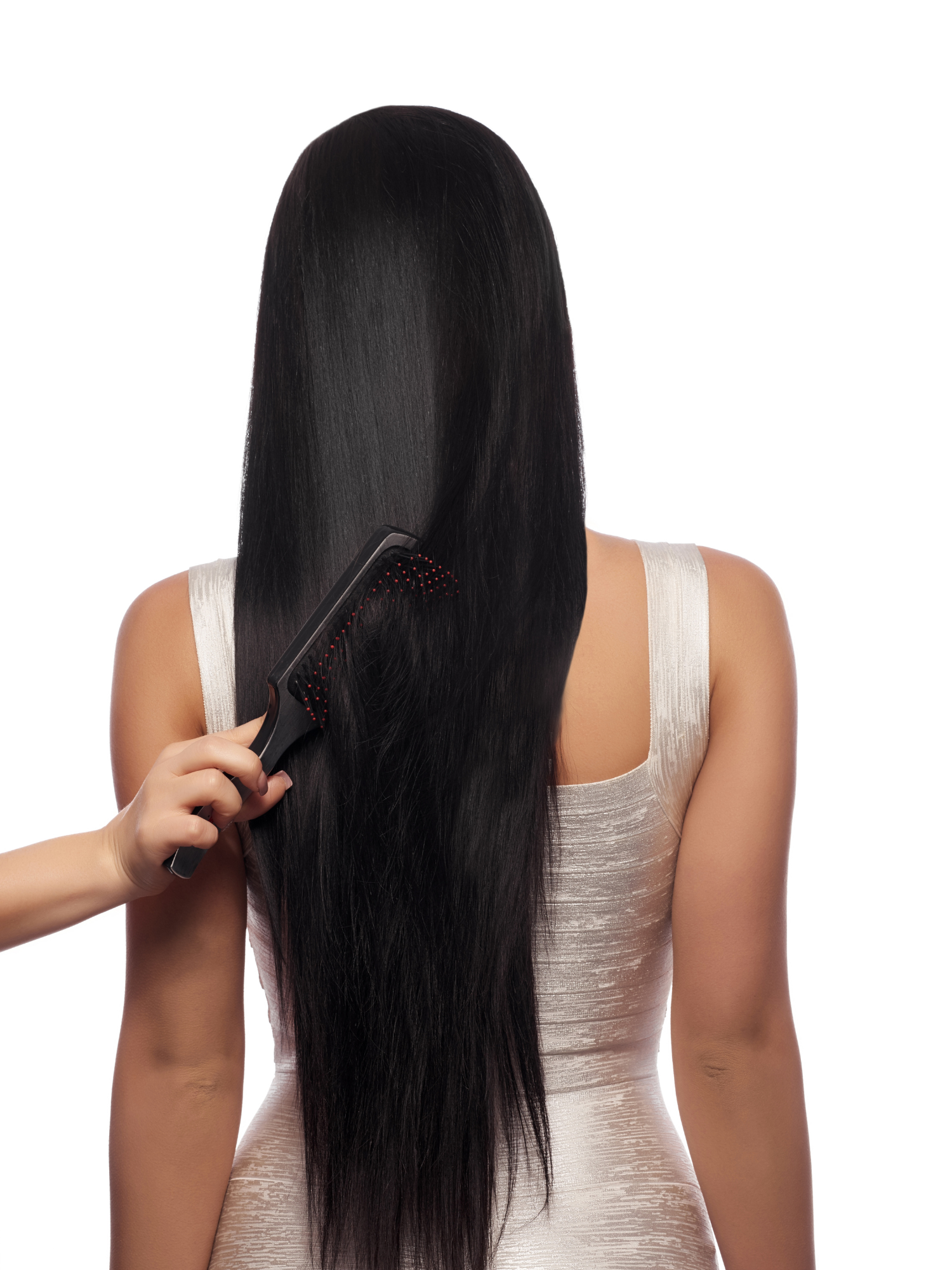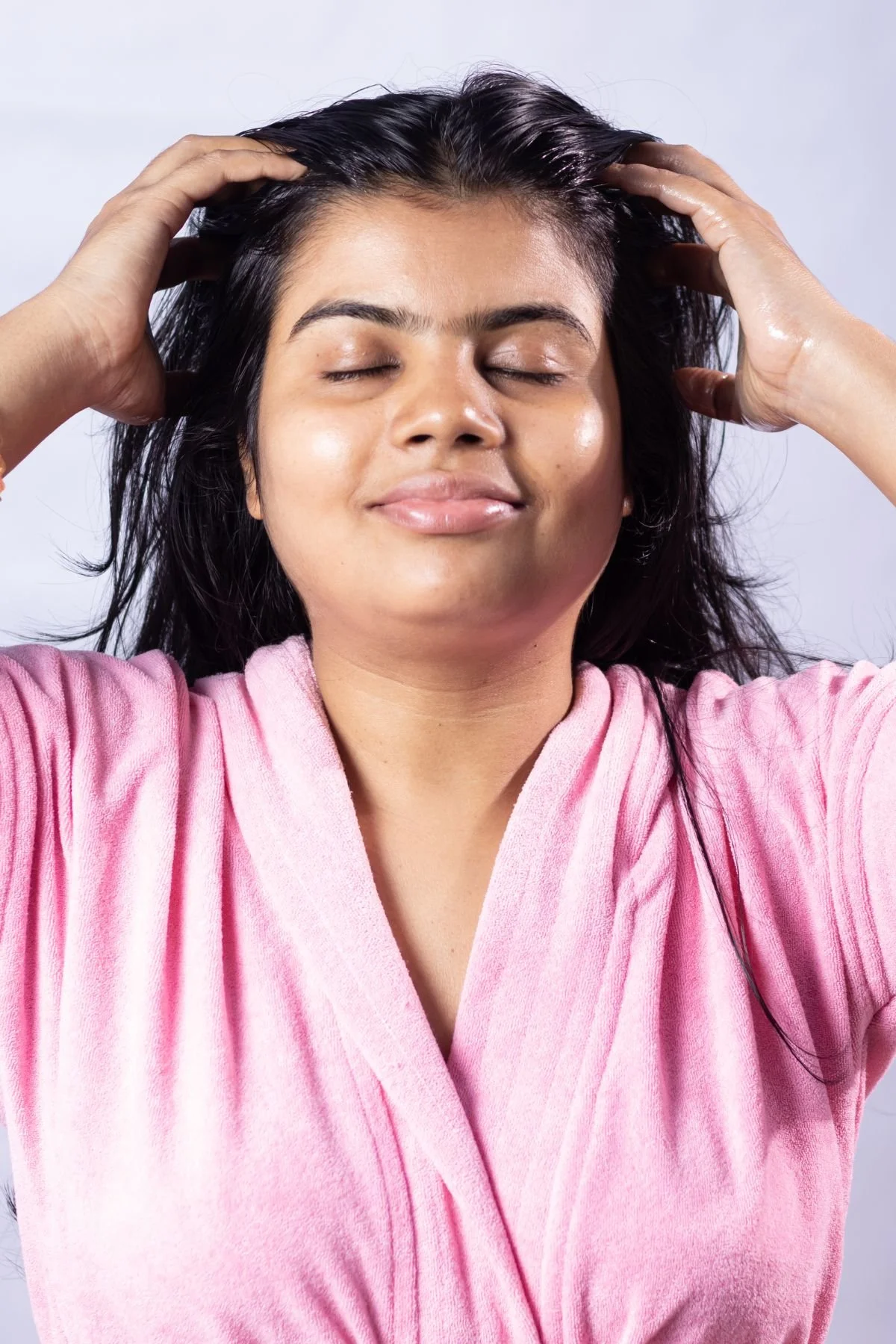How to fix damaged curly hair
This post may contain affiliate links, which means I'll receive a commission if you purchase through the link at no extra cost to you. Please read the full disclosure here.
As winter rolls around and your hair starts to become dry again, you may notice that your heat damage is more visible. Heat damage is very common as the trend of using heat tools continues to influence the masses. It may seem impossible to nurse your strands back to health if they are extremely damaged and lack moisture. The best course of action is to engage in preventative measures to ensure that your hair stays photo-ready at all times.
Why is my curly hair damaged?
Your hair can become damaged for a variety of reasons. The common causes of damaged hair include heat damage, environmental factors, chemical processes, protein overload, and diet. You may notice that your hair is dull, extremely dry, thinning, or frizzier than usual. These are signs of potential heat damage, and taking care of your hair should now be a top priority if it isn’t already. You can do many things to combat damaged curls, but it all comes down to consistency.
Causes of damaged hair
Heat damage
Heat damage occurs when hot styling tools are used to achieve certain styles or hair textures. Flat irons, curling wands, a blow dryer, and other heat tools are the leading cause of heat damage.
Environmental Factors (UV Rays, weather conditions)
Strong sun, wind, cold air, temperature fluctuations, and variations in air humidity are just a few examples of environmental conditions that can harm hair. In winter, static and dry air can cause moisture to be lost, leaving hair dry. Additionally, the repeated transition from indoor air to outdoor air can cause the hair's cuticle layers to rapidly lose moisture during the peak of the colder seasons.
Chemical Processes
Bleaching and chemical processes are among the leading causes of damaged hair. The harsh chemicals used in these processes usually change the natural DNA of the hair in order to accommodate a new color or curl pattern. Unfortunately, there is no way to physically put your ends back together if they are split or broken without clipping them and then maintaining an appropriate haircare routine. To try to balance the breakage, your hair requires the proper ratio of protein and moisture in addition to regular trimming and cutting.
Protein Overload
When your hair becomes oversaturated with moisture, you run the risk of developing hygral fatigue, among other hair-related concerns. Hygral fatigue occurs when your hair follicles become damaged due to repeated swelling and unswelling of the scalp. It's a good idea to use shampoos and conditioners less frequently if your hair is over-hydrated. To prevent robbing your hair of its natural oils, you might want to cut back on how often you wash your hair.
Diet
It is true that your diet will impact your scalp and hair. 11 of the 20 amino acids needed to form hair can be produced by your body naturally, but you must consume a range of meals each day to meet these requirements. Your body produces 11 of the 20 amino acids, while the final nine amino acids that are the most crucial for healthy hair and skin have to be consumed through nutrition. Because of this, dieting fads or a lack of diet can harm your skin, scalp, and hair by causing hair loss, dullness, and other problems. Try out vitamins to aid your body in producing hair-nourishing amino acids.
Signs you have heat-damaged curls
Excessively frizzy hair
Frizzy hair is often more prominent on heat-damaged curls than on straight hair. If you experience frizz in the sections of your hair that you iron or blow dry the most, like your bangs or the two front strands, that’s a dead giveaway that your frizz is caused by heat damage.
Split ends
Split ends occur when the ends of your hair separate or fray. This usually happens at the end of the strand, but some split ends can travel further up the strand and damage a significant portion. Split ends leave your hair brittle and increase the likelihood of breakage.
Rough hair texture
Rough hair texture that is difficult to detangle is often a sign of damage. Damaged hair is often rough or stringy, making it noticeable to the touch.
Lack of elasticity/fragile
Damaged hair has little to no elasticity, which results in more breakage. If you notice excessive shedding or feel yourself losing strands when tugging on your ponytail, it might be worth investing in a deep conditioner, protein treatments, or hair repair products.
Vulnerable to dryness
You may notice that your heat-damaged hair is often dry and dull. Due to the harsh temperatures of your hot tools, the hair is often stripped of its natural sheen and appears lifeless. Damaged hair has a harder time retaining moisture, so it's important to consistently maintain healthy levels of hydration within your hair strands.
Now how do you repair your heat-damaged curls?
Cut out heat styling tools.
Heat tools do the most damage after bleaching. Applying constant high heat to your fragile hair strands disrupts your natural curl pattern and causes further damage when applied to processed hair. The good news is that your hair health will gradually improve by eliminating heat tools and doing the most recommended hair treatments.
Do more protective hairstyles.
Protective hairstyles are a great way to provide the scalp with healthy tension that promotes new growth while also preventing you from grabbing the flat iron and straightening away. Braids, Locs, Bantu knots, and twists are great for coarser hair types. Think of fishtail braids, buns, and hair wraps for wavy and straight hair.
Stop using your heat tools on a high heat setting
If you must use a heat tool, make sure you use it on the lowest setting that allows you to get the job done. Additionally, invest in a heat protectant to keep you somewhat safe from hot tools. A quick tip to remember is never a hot tool, like flat irons or curling irons on wet hair. Your hair should be 100% dry when using hot tools like this.
How can I revive my curly hair overall?
Cut off the dead ends
Cutting off dead or split ends is a good way to refresh your hair and promote healthy growth. Removing this part of the hair prevents the split end from rising higher up into the air shaft and damaging the rest of the strand. Cutting the ends of your hair frequently will not cause it to grow at a faster rate. Your hair will instead appear thicker, healthier, and shinier.
Do a weekly deep conditioning treatment
By deep conditioning your hair, you saturate your hair follicles in product that fortifies hair, shields it from damage, and helps kick start the repair process. Deep conditioners also stay in the hair longer than regular conditioners, allowing them to hydrate and nourish the hair for a longer period of time.
Hair oil treatments
Hair oiling keeps the hair moisturized and enriched by nutrients. The hair oil penetrates deeply into your scalp and your hair strands, resulting in glossier hydrated hair over time.
Take a break from hair tools
As convenient and cute as curling and straightening your hair is, it’s not worth the permanent damage that will accumulate over time. This is to an extent - cutting out heat is not going to completely reverse your damage. However, cutting back on hot tools and creating a solid hair care routine that is meant for damaged curly hair will help you get your curls back on track.
Stop bleaching your hair
As fun as changing your hair color can be, the harmful effects of bleach often outweigh the benefits. The outer cuticles of your hair lift when bleached, and the bonds within the hair are also weakened. Your hair will become exceedingly brittle and breakable as a result.
Trust the process
Your hair is not going to change overnight! What’s important is sticking to a solid hair routine and being consistent with products, ingredients, and styling techniques geared toward recovering your curls. Eventually, with time (and some trimming), your hair will begin to recover.
How to prevent further curly hair damage moving forward:
Make sure you are using products that agree with your curly hair
It's important to choose appropriate products for your curl type, as some products can potentially worsen your hair problems. You run the danger of worsening the damage if you are unsure of the particular ingredients your hair needs.
Use hair products to hydrate your hair (leave-in conditioner and hair mask)
When looking for hydrating hair products, you want to look for natural oil-infused deep conditioners. These types of deep conditioners/ hair masks help lock in the moisture in the hair while also covering and shielding the outer layers of the hair cuticle. Also, a rich leave-in conditioner is another most-have hair product that will help keep your hair hydrated till your next wash day.
Get your hair trimmed every 3-4 months.
By consistently trimming your hair, you are removing any dead hair and split ends that may prevent new growth, effectively giving your hair a refresh.
Stop bleaching your hair or bleach your hair less often.
It's crucial to take into account the degree of harm your hair sustained during the initial dying procedure and make plans appropriately. To give your hair a head start on repairing some of the healthy oils, proteins, and other nutrients that hair needs to grow, it is crucial to schedule a hair treatment soon after the bleaching session. Otherwise, you risk losing a lot of hair due to it becoming weak from the bleaching process.














